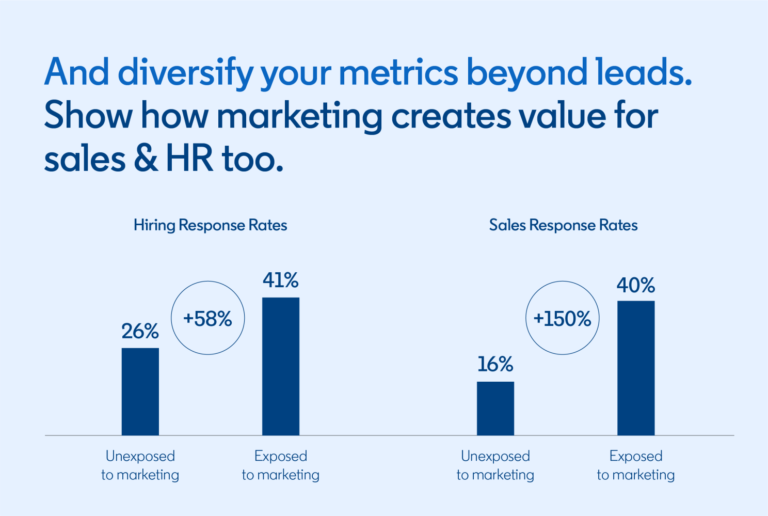Want to Drive Growth Next Year? Embrace All Weather Marketing

Supply and demand is one of the simplest concepts in business. When something is more plentiful, it is less expensive to buy in volume. When something is scarce, it is harder to get and thus more expensive.
We see these ebbs and flows play out in the world of advertising. When times are good, brands everywhere are investing in their future growth, leading to greater competition for finite audiences. During economic downturns, it’s common for companies to scale back on brand.
While understandable, this misguided tendency comes from a focus on the wrong source of supply. True, there are often fewer dollars being spent and fewer purchases being made during recessions. However, the people you want to reach are still out there, still consuming content, and still open to engagements with your brand that leave a lasting impression. In fact, this supply of mental availability tends to increase as most advertisers pull back.
That’s why, as we look ahead to 2023, it’s never been more important to embrace the fundamentals of all weather marketing.
Why all weather marketing holds the key to business growth
There’s a growing sense of cautious optimism that next year’s anticipated recession will be less severe than some feared. Nonetheless, most analysts still expect an economic downturn, and brands and their marketers need to be strategically preparing themselves for whatever lies ahead.
“All weather marketing” is a strategy that’s been proven out in moments like the one we’re in. An extension of famed investor Ray Dalio’s concept of an “All Weather Portfolio” designed to perform well during both booms and busts, “‘All Weather Marketing’ is about having the resolve to remain steady and committed to investment for the longer term, even as outside circumstances change.” Given the understandable reactiveness to declining lead volume, budget cuts and other pressures that naturally take hold in a recession, this can become a major differentiator.No alt text provided for this image
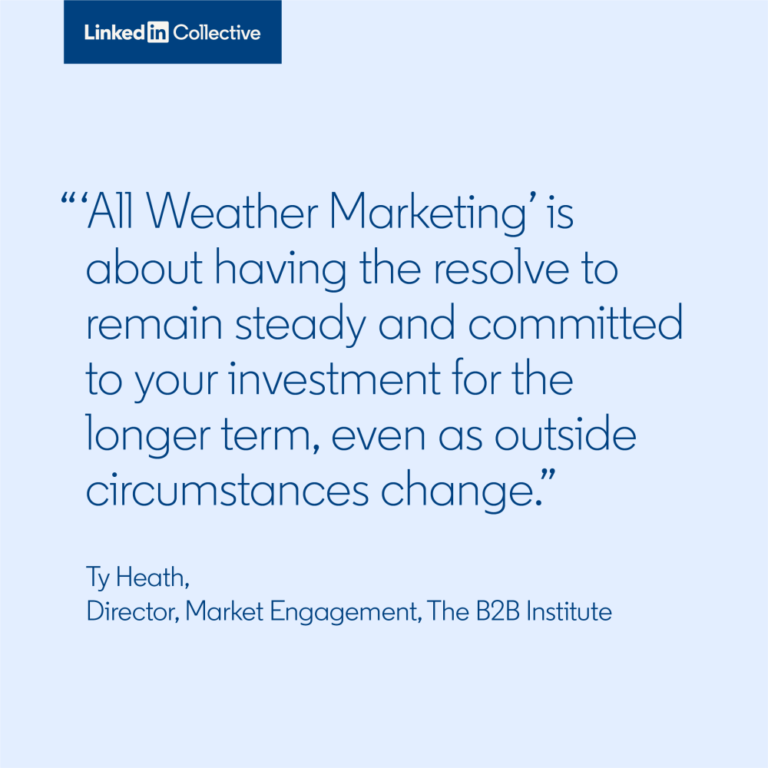
As Jon Lombardo of the B2B Institute explained: “To succeed in bad times, you need to keep your calm, when everyone else panics. You need to think rationally, when others can’t. You need to trust reliable data over unreliable opinions.”
The All Weather Marketing playbook consists of four key data-driven pillars. Here we’ll take a quick look at each of the four.
1. Strategy: Think long-term
The 95-5 rule tells us that even in the best of times, 95% of buyers in your B2B category are out-market at any given time. Evidence shows that during economic slowdowns, the proportion of in-market buyers can shrink as low as 1 percent as companies delay purchases. That’s a minuscule supply.
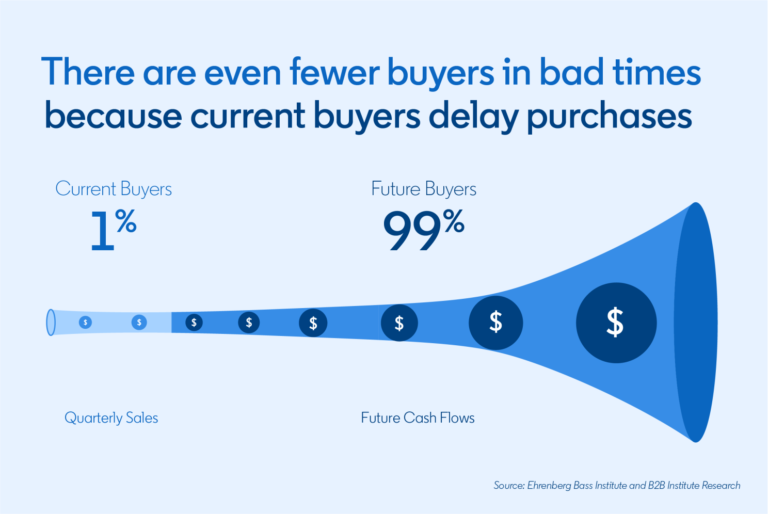
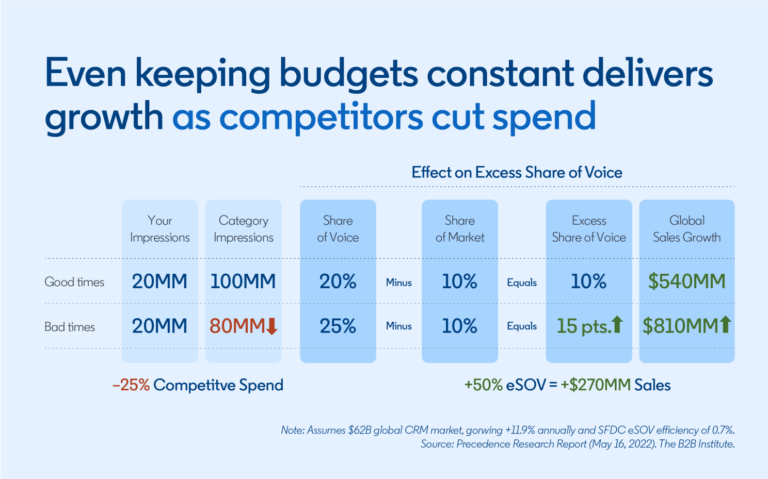
2. Creative: No need to reinvent the wheel
One misperception in the marketing community is that all of our brand messaging will cease to connect and resonate with audiences during challenging times. It’s true that certain content should be modified with a sensitive and empathetic touch. However, the need to start from scratch is greatly exaggerated.
Research by the B2B Institute during the Covid-19 recession found that buyers did not respond differently to the same creative during the pandemic, with ad scores remaining static both before and after the initial lockdown in Italy and all that followed.
With this in mind, why not recycle some of your best brand creative to give them more air-time with a larger upper-funnel audience, with less competition? This is a practical way for marketers to demonstrate how they can be resourceful and focused during a downturn. Working with the creative you already have will allow you to stretch your marketing investments as far as possible on reach and distribution, which will resonate strongly with executives at your company who are looking to find ways to stay balanced and responsible.
3. Distribution: Location is everything
Marketers can’t afford waste with such scarce budgets, so optimal media distribution is critical. In an all weather marketing approach, advertisers should focus on platforms that bear these three essential qualities:
- On-target reach: Make sure you’re reaching the right people with your distribution strategy. This is an area where programmatic advertising often comes up short, because third-party B2B data is inaccurate 84% of the time.
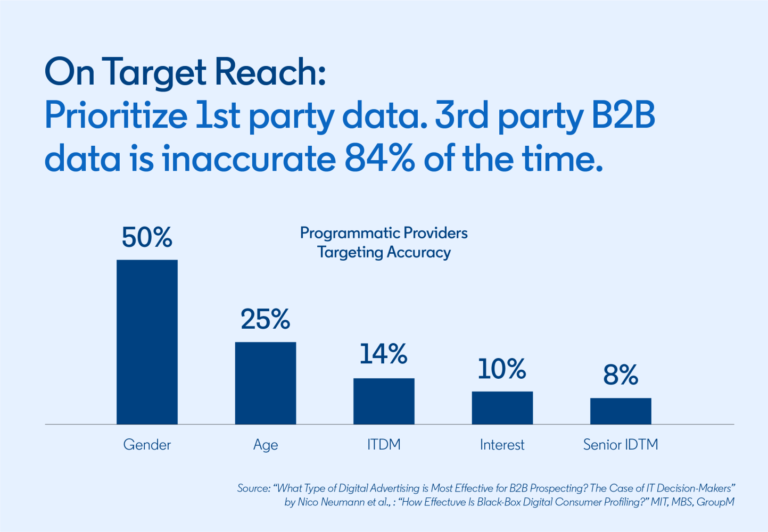
- Premium context: To that end, premium contexts are the way to go. Cheap platforms are cheap for a reason. Invest in premium media to be sure your ads are getting the right kind of attention, not only in terms of on-target reach, but also in terms of context in a trusted environment.
- High attention formats: Are your ads actually being noticed and viewed? Generally speaking, most ads aren’t, because they don’t coexist seamlessly with the surrounding content, and are perceived as irrelevant distractions.
Not all impressions are the same. Look beyond CPMs to understand the quality of the reach you’re buying.
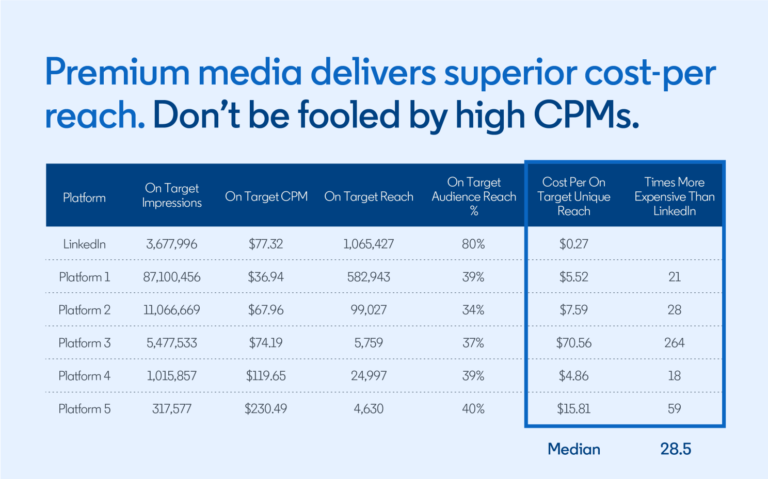
4. Measurement: Diversify your portfolio of metrics
Short-term sales metrics are a liability in bad times. When the pool of active buyers is reduced, it’s not reasonable to expect the same immediate conversions and ROI – a misstep that can lead to inaccurate impact assessment and decision-making.
Diversify your measurement strategy by incorporating long-term memory metrics. These can be concrete indicators of how your marketing is positioning the brand to perform financially when economic conditions improve. As Peter Field has stated, “Brand advertising is not about profiting in a recession, it is about capitalizing on recovery.”
Marketers must not only advocate for a long-term evaluation of their impact, but also a cross-functional evaluation of their impact. Marketing drives financial outcomes, which is of course the primary objective. But it also drives key business results in other areas, such as sales and HR. Documenting this lift will help marketers demonstrate their impact and advocate for continued investment, even when times are tough.
Finally, remember: everything is relative. In the face of disruptive circumstances, how you’re performing against competitors matters much more than how you’re performing against your own previous benchmarks.
